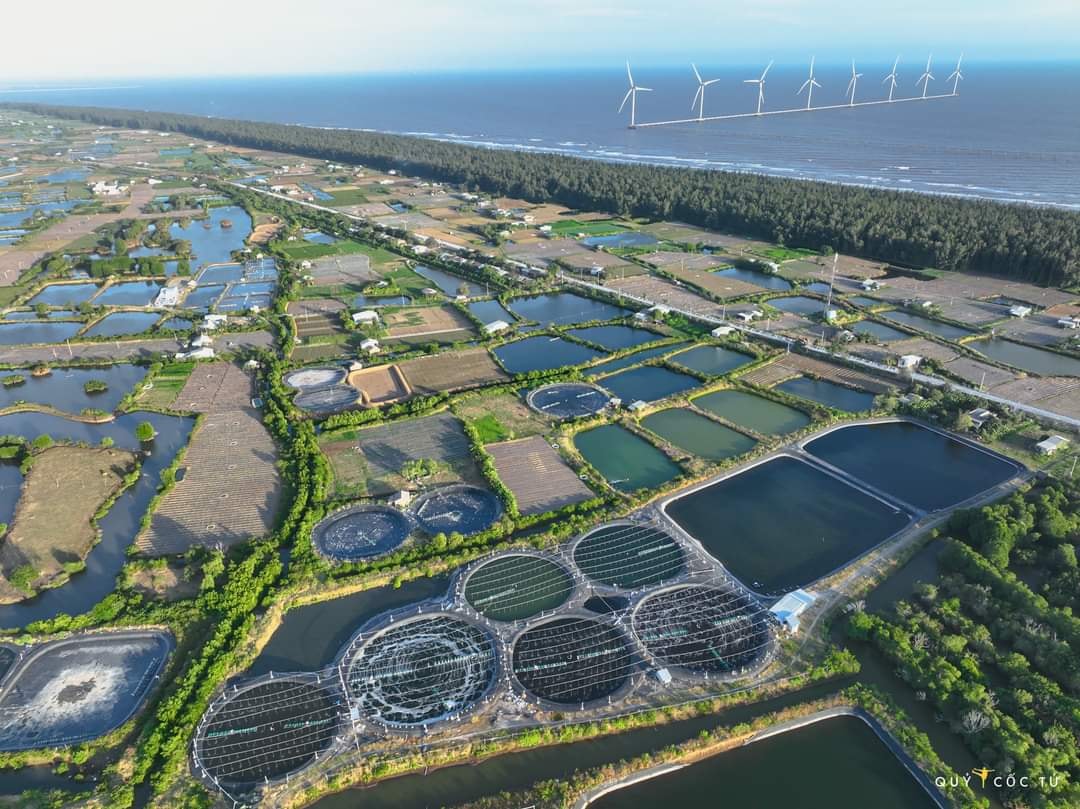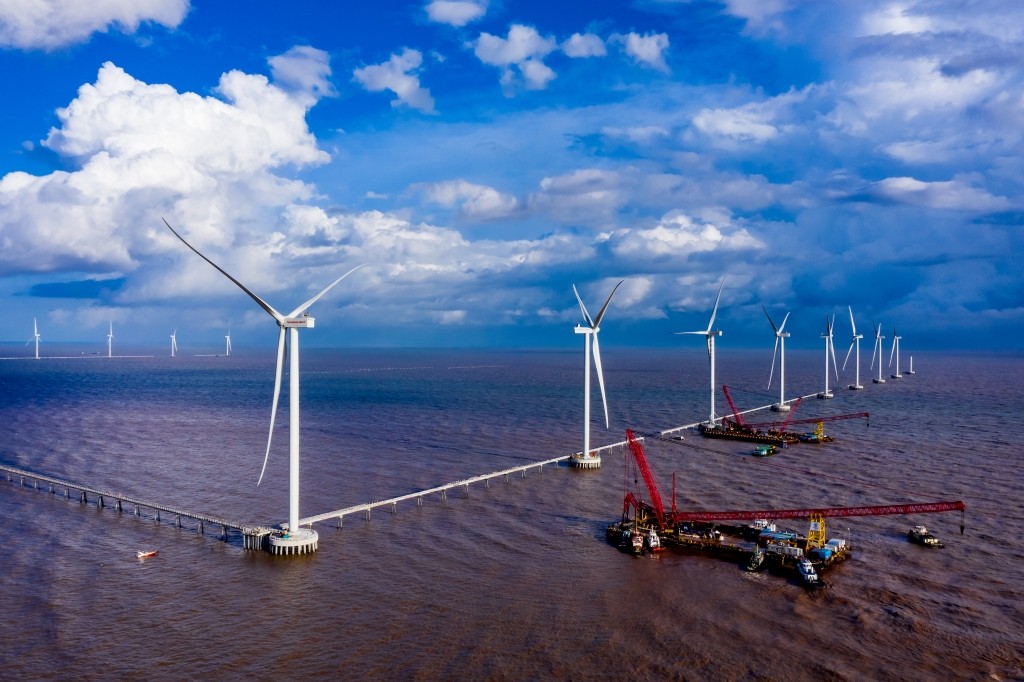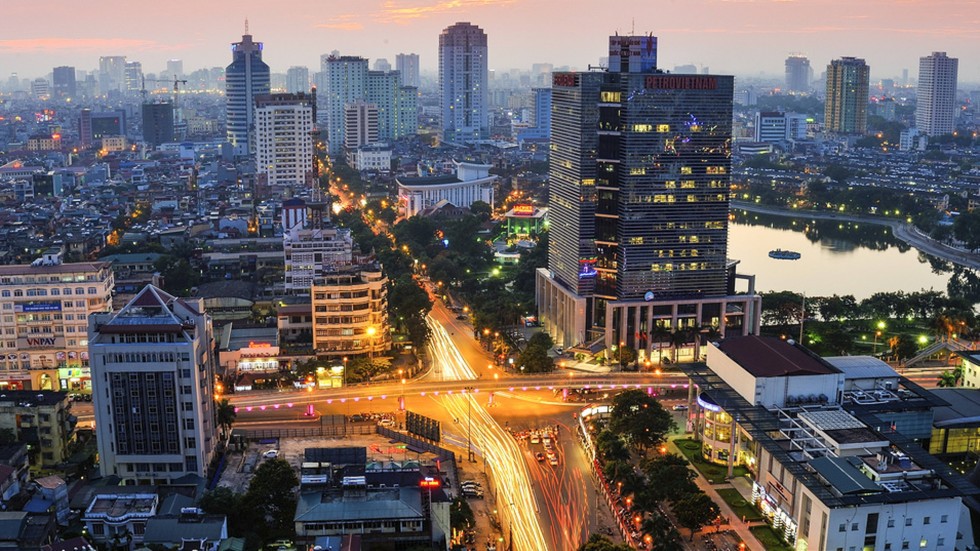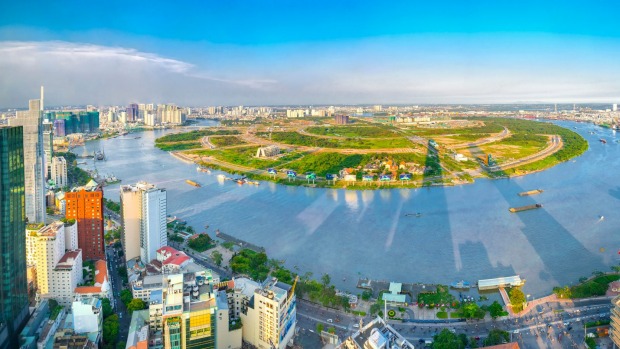Regulations on adaptation to climate change in Vietnam

Vietnam law has regulations on adaptation to climate change. Let’s find out this issue with Lawyer X through the following situation: “Dear Lawyer! I want to ask what does climate change adaptation mean under Vietnam law? What are regulations on reduction of GHG emissions? Thanks for answering my questions!’
Legal grounds
- Vietnam law on environment protection
Regulations on Climate change adaptation
– Climate change adaptation refers to actions taken to strengthen the resilience of social-ecological systems, minimize adverse impacts of climate change and seize the opportunities offered by climate change.
– Climate change adaptation shall cover:
+ Assessment of impacts, vulnerabilities, risks, loss and damage caused by climate change to sectors, regions and residential communities based on the climate change scenario and socio-economic development forecast;
+ Climate change adaptation, disaster risk reduction, community- and ecosystem-based climate change adaptation model; response to sea level rise and urban inundation;
+ Construction and operation of the system for supervising and assessing climate change adaptation.
– The Ministry of Natural Resources and Environment shall preside over and cooperate with Ministries and ministerial agencies in:
+ organizing the implementation of regulations in Points a and c Clause 2 of this Article;
+ requesting the Prime Minister to promulgate the national climate change adaptation plan, reviewing and updating it every 05 years; to establish the national system for supervising and assessing climate change; criteria for determining climate adaptation projects and tasks approved by the Prime Minister; criteria for assessing climate risks;
+ providing guidelines for assessing impacts, vulnerabilities, risks, loss and damaged caused by climate change;
+ formulating and organizing implementation of the national climate change resilience plan;
+ building and operating the national system for supervising and assessing climate change adaptation.
– Ministries, ministerial agencies and provincial People’s Committees shall:
+ implement the regulations laid down in Point b Clause 2 of this Article in accordance with this Law and other relevant regulations of law; organize assessment of impacts, vulnerabilities, risks, loss and damaged caused by climate change; submit an annual consolidated report to the Ministry of Natural Resources and Environment;
+ build and operate the sectoral or local system for supervising and assessing climate change adaptation under their management of sectors and fields.
Regulations on Reduction of GHG emissions
– Major GHGs include carbon dioxide (CO2), methane (CH4) and nitrous oxide (N2+. Low-concentration gases that have high global warming potential include hydrofluorocarbons (HFCS), perfluorocarbons (PFCS), sulphur hexafluoride (SF6) and nitrogen, trifluoride (NF3).
– The reduction of GHG emissions shall focus on:
+ organizing reduction of GHG emissions and GHG absorption according to a roadmap and method for reducing GHG emissions in conformity with national conditions and international commitments.
+ inventorying GHGs, measuring, reporting and appraising reduction of GHG emissions at national, sector, or field level or relevant internal level;
+ inspecting the compliance with regulations on inventorying of GHGs and reduction of GHG emissions, and the implementation of the mechanism and method for cooperation in reduction of GHG emissions;
+ formulating and implementing the mechanism and method for cooperation in reduction of GHG emissions in accordance with regulations of law and international treaties to which Socialist Republic of Vietnam is a signatory;
+ organizing and developing the domestic carbon market.
– The Prime Minister shall promulgate a list of sectors and GHG emitting facilities subject to GHG inventory, update it every 02 years according to the ratio of GHG emissions to the total national GHG emissions; socio-economic development conditions and situation; consumption of fuels and energy per unit of product or service by businesses.
– The Ministry of Natural Resources and Environment shall:
+ compile and submit to the Prime Minister a list of sectors and GHG emitting facilities subject to GHG inventory for approval; introduce the national GHG inventory system; system for measuring, reporting and appraising reduction of GHG emissions;
+ prepare a national GHG inventory report every 02 years;
+ provide guidance on and organize appraisal of results of GHG inventory results and plans to reduce GHG emissions with respect to the sectors and facilities subject to GHG inventory.
– Any Ministry that manages sectors subject to GHG inventory has the responsibility to:
+ organize GHG inventory and send inventory results to the Ministry of Natural Resources and Environment every 02 years by January 31 of the next reporting period for consolidation and reporting to the Prime Minister;
+ formulate and organize implementation of the annual plan to reduce GHG emissions in the fields of energy, agriculture, land use, forestry, waste management and industrial processes;
+ provide guidance on technical processes and regulations regarding measurement, reporting and appraisal of reduction of GHG emissions in fields and sectors under its management;
+ annually consolidate and report results of reduction of GHG emissions within its scope of management to the Ministry of Natural Resources and Environment before January 15 of the next reporting period for consolidation and reporting to the Prime Minister;
+ provide guidance on selection and application of technological and managerial methods to reduce GHG emissions in conformity with the scale, industries and business lines under its management.
– Provincial People’s Committees shall provide information and data in service of the national and sectoral GHG inventory to the Ministry of Natural Resources and Environment, other Ministries and ministerial agencies concerned; inspect the performance of activities relating to reduction of GHG emissions under their management.
– A GHG emitting facility on the list of facilities subject to GHG inventory has the responsibility to:
+ organize GHG inventory, build and maintain a database of GHG emissions and send inventory results to the Ministry of Natural Resources and Environment every 02 years by December 01 of the reporting period for consolidation and reporting to the Prime Minister;
+ formulate and implement the annual plan to reduce GHG emissions; integrate the reduction of GHG emissions into its quality management program, cleaner production program and environmental protection program;
+ prepare an annual report on reduction of GHG emissions to implement its GHG emissions reduction plan using the measurement, reporting and appraisal system, and submit it to the Ministry of Natural Resources and Environment, other Ministries, ministerial agencies and provincial People’s Committees concerned by December 31 of the reporting period.
– The Government shall elaborate this Article.
Regulations on Ozone layer protection
– Ozone layer protection refer to an action taken to adapt to climate change in order to prevent ozone depletion and minimize harmful effects of ultraviolet radiation from the Sun.
– Ozone layer protection shall focus on:
+ managing production, export, import, sale and elimination of controlled ozone-depleting substances and GHGs under the international treaty on the protection of the ozone layer to which the Socialist Republic of Vietnam is a signatory;
+ collecting, recycling, reusing or disposing of controlled ozone-depleting substances and GHGs under the international treaty on the protection of the ozone layer to which the Socialist Republic of Vietnam is a signatory in equipment containing them when they are no longer used;
+ developing and applying technologies and equipment using non-ozone-depleting substances and climate-friendly substances.
– The Ministry of Natural Resources and Environment shall:
+ preside over and cooperate with other Ministries and ministerial agencies concerned in requesting the Prime Minister to promulgate the national plan for management and elimination of controlled ozone-depleting substances and GHGs under the international treaty on the protection of the ozone layer to which the Socialist Republic of Vietnam is a signatory;
+ promulgate a list and provide guidelines for use of controlled ozone-depleting substances and GHGs in conformity with the roadmap for implementing the international treaty on the protection of the ozone layer to which the Socialist Republic of Vietnam is a signatory;
+ preside over and cooperate with other Ministries, ministerial agencies and provincial People’s Committees in managing, controlling, minimizing and eliminating the substances and gases on the list specified in Point b of this Clause; organize implementation of the national plan for management and elimination of ozone-depleting substances and GHGs.
– Ministries, ministerial agencies and provincial People’s Committees shall, within their power, control the production, export, import and sale of the substances and gases on the list specified in Point b Clause 3 of this Article. Ministers and heads of ministerial agencies shall promulgate regulations on management and policy to assist in transformation of technologies for eliminating and minimizing controlled ozone-depleting substances and GHGs.

– Manufacturers of equipment and products containing the substances and gases on the list specified in Point b Clause 3 of this Article must develop an appropriate roadmap for replacing and eliminating controlled ozone-depleting substances and GHGs under the international treaty on the protection of the ozone layer to which the Socialist Republic of Vietnam is a signatory.
– Facilities using equipment and products containing or using the substances and gases on the list specified in Point b Clause 3 of this Article must comply with regulations on collection, transport, recycling and disposal under the guidance of the Ministry of Natural Resources and Environment.
– Businesses that use the substances and gases on the list specified in Point b Clause 3 of this Article shall make a transfer of ozone layer protection technology entitled to incentives and assistance as prescribed by this Law and Law on Technology Transfer.
– The Government shall elaborate this Article.
Integration of contents of adaptation to climate change with strategies and planning
– Contents of adaptation to climate change to be integrated with a strategy or planning include:
+ Climate change scenario and impacts of climate change used to determine long-term objectives of the strategy or planning;
+ Climate change adaptation solutions integrated with the strategy or planning;
+ Results of analysis and assessment of climate change adaptation solutions used to determine socio-economic indicators of the strategy or planning.
– The strategies and planning mentioned in Article 25 of this Law must be integrated with contents of adaptation to climate change specified in this Law and other relevant regulations of law.
Regulations on National climate change database
– The national climate change database includes the following information and data:
+ Legislative documents, policies, strategies, planning, plans, standards, technical regulations, technical requirements, professional processes, socio-economic norms regarding climate change and ozone layer protection;
+ Impacts of climate change on natural resources, environment, ecosystems, living conditions and socio-economic activities;
+ GHG emissions and socio-economic activities relating to GHG emissions;
+ Reduction of GHG emissions and climate change adaptation
+ Protection of ozone layer and management of ozone-depleting substances;
+ Results of national climate assessment;
+ Climate change scenarios over periods;
+ Scientific research, development and transfer of technologies for adapting to climate change and protection ozone layer;
+ Resources for climate change adaptation and ozone layer protection;
+ International cooperation in climate change adaptation and ozone layer protection.
– The Ministry of Natural Resources and Environment shall organize establishment and updating and providing guidelines for operation and use of the national climate change database.
– Other Ministries, ministerial agencies and provincial People’s Committees shall organize the investigation into, surveying and collection of the information and data mentioned in Clause 1 of this Article within the scope and areas under their management and send them to the Ministry of Natural Resources and Environment.
Regulations on National climate change adaptation report
– The national climate change adaptation report includes:
+ Overview of climate change developments and impacts;
+ Results of national GHG inventory;
+ Efforts and efficiency in adaptation to climate change;
+ International and domestic resources for climate change adaptation;
+ Fulfillment of international climate change commitments;
+ Prediction of impacts of climate change on economy, society and environment;
+ Proposed solutions for climate change adaptation.
– Other Ministries, ministerial agencies and provincial People’s Committees shall prepare an annual report on climate change adaptation within the scope and fields under their management and send it to the Ministry of Natural Resources and Environment.
– The Ministry of Natural Resources and Environment shall prepare a national climate change adaptation report every 05 years and submit it to the Government for reporting to the National Assembly; instruct other Ministries, ministerial agencies and provincial People’s Committees to prepare climate change adaptation reports.
Implementation of climate change and ozone layer protection clauses
– The Ministry of Natural Resources and Environment shall:
+ play the leading role in implementing climate change and ozone layer protection clauses in the international treaties to which the Socialist Republic of Vietnam is a signatory;
+ organize the preparation, updating and implementation of Intended Nationally Determined Contributions, prepare a report on climate change and ozone layer protection every 02 years and other national reports thereon under the international treaties to which the Socialist Republic of Vietnam is a signatory.
+ formulate mechanisms and policies for mobilization and management of resources to implement Intended Nationally Determined Contributions and fulfill Vietnam’s commitments to climate change and ozone layer protection under the international treaties to which the Socialist Republic of Vietnam is a signatory.
– Other Ministries, ministerial agencies and provincial People’s Committees shall implement climate change and ozone layer protection clauses in the international treaties to which the Socialist Republic of Vietnam is a signatory; submit reports on implementation thereof to the Ministry of Natural Resources and Environment for consolidation and reporting as prescribed.
Please see more:
- Instructions for exclusive registration of company logos in Vietnam
- Service of changing the legal representative of Vietnamese enterprises
Services of Lawyer X
Prestigious professional services: Firstly, the team of consultants and consultants for many years in the field of civil status, and customer support.
On-time: Certainly, with the motto “Get your lawyer right at your fingertips”, we ensure the service always performs on time. The rights and interests of customers always come first.
Cost: Besides, Lawyer X’s service costs are highly competitive; depending on the nature of the particular case. So, we want our guests to have the best possible service experience. Therefore, costs which guaranteed to be the most suitable and economical for customers.
Confidentiality of client information: Finally, all personal information of clients Lawyer X will be 100% confidential.
If you need any further information, please contact LSX Law firm: at +84846175333 or Email: [email protected]
Frequently asked questions
Climate change adaptation refers to actions taken to strengthen the resilience of social-ecological systems, minimize adverse impacts of climate change and seize the opportunities offered by climate change.
The Prime Minister shall promulgate a list of sectors and GHG emitting facilities subject to GHG inventory, update it every 02 years according to the ratio of GHG emissions to the total national GHG emissions; socio-economic development conditions and situation; consumption of fuels and energy per unit of product or service by businesses.
Other Ministries, ministerial agencies and provincial People’s Committees shall prepare an annual report on climate change adaptation within the scope and fields under their management and send it to the Ministry of Natural Resources and Environment.
Conclusion: So the above is Regulations on adaptation to climate change in Vietnam. Hopefully with this article can help you in life, please always follow and read our good articles on the website: lsxlawfirm.com




